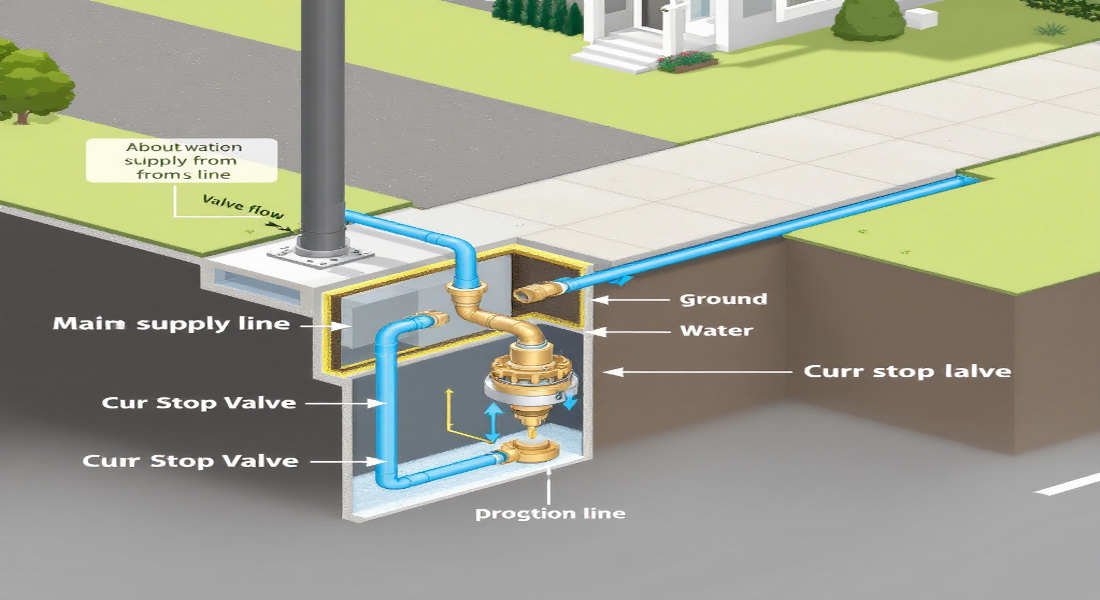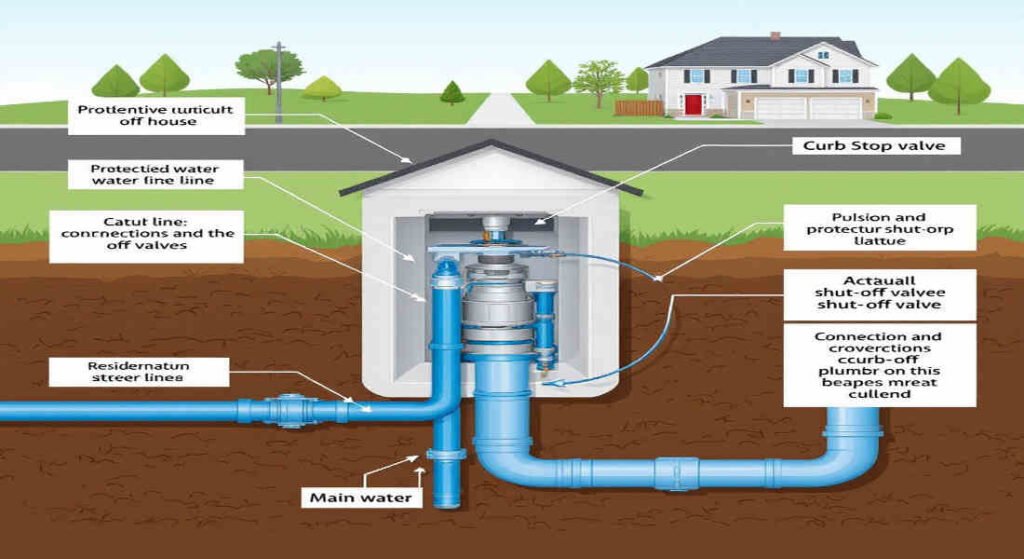House plumbing is one of the most essential systems in any home. It ensures the reliable flow of clean water to your faucets, showers, and appliances while safely removing wastewater. But have you ever wondered how water gets from the municipal supply to your home? One critical yet often overlooked component of this process is the curb stop.
So, what is a curb stop in house plumbing? Simply put, a curb stop is a specialized valve that controls the flow of water from the municipal supply line to your property. Located underground near the curb or property line, it serves as an essential point of control for your home’s water supply.
What Is a Curb Stop in House Plumbing?
To fully grasp its importance, let’s start with a clear definition of a curb stop and its role in your plumbing system.
Definition and Location
A curb stop is a type of valve used to control the water flow from the municipal water main to your property’s plumbing system. It’s typically located underground in a curb box near the edge of your property line or the sidewalk. The curb box, often made of metal or plastic, protects the valve while providing access for operation.
Functionality
Curb stops act as an on/off switch for your home’s water supply. If there’s a need to shut off the water—whether for repairs, maintenance, or in case of emergencies like a burst pipe—the curb stop is the valve that allows you (or utility personnel) to turn the water off at the property level.
Materials and Durability
Most curb stops are made from durable materials like brass or galvanized steel, ensuring they can withstand underground conditions, corrosion, and the pressure of the water system. These materials are chosen to ensure long-term functionality, even in harsh environments.
Why It’s Important
By connecting the municipal water main to your property, the curb stop plays a vital role in ensuring you have access to water while also offering a way to stop the flow when needed. Think of it as the gateway to your home’s water system.
The Importance and Role of Curb Stops in Plumbing Systems
Curb stops may seem like a small component, but their impact on house plumbing is enormous. Let’s explore why they’re so essential.
Emergency Water Shutoff
One of the primary roles of a curb stop is to act as a quick shutoff point during emergencies. Imagine a situation where a pipe inside your home bursts. Instead of waiting for a plumber or the water utility to shut off the flow at the main line, you can use the curb stop to cut off the water supply and prevent further damage.
Repairs and Maintenance
Curb stops are also crucial for routine plumbing repairs and maintenance. Whether you’re replacing a water heater, fixing a leaking pipe, or upgrading your plumbing fixtures, shutting off the water at the curb stop ensures that work can be done safely without affecting the municipal water supply.
Preventing Water Damage
By providing a way to quickly stop the flow of water, curb stops help prevent water damage in situations like floods or plumbing malfunctions. Homeowners who know how to locate and operate their curb stop have a significant advantage in protecting their property.
Water Conservation
Curb stops also play a role in water conservation. If a leak occurs between the curb and your home, shutting off the water at the curb stop can prevent unnecessary waste until the issue is resolved.
Who Operates the Curb Stop?
In most cases, utility personnel are responsible for operating curb stops. However, in emergencies or for private repairs, homeowners may need to access the valve. It’s important to know where your curb stop is located and how to use it safely.
Types and Mechanisms of Curb Stops
Not all curb stops are the same. Different types of valves are used depending on the system’s design and functionality.
You may also read (home plumbing under the sink).
Gate Valves
Gate valves are one of the most common types used in curb stops. They operate by raising or lowering a gate inside the valve to control water flow.
- Advantages: Gate valves are simple, reliable, and effective for complete shutoff.
- Disadvantages: They can be prone to wear out over time, especially if used frequently.
Ball Valves
Another popular option is the ball valve, which uses a rotating ball with a hole in the center to control water flow. Turning the valve handle rotates the ball to open or close the passage.
- Advantages: Ball valves are durable, have a longer lifespan, and provide a tighter seal.
- Disadvantages: They can be more expensive than gate valves.
Tools for Operation
Operating a curb stop typically requires a curb key or specialized wrench. These tools are designed to reach into the curb box and turn the valve without damaging it.
Installation and Maintenance of Curb Stops
Proper installation and maintenance of curb stops are critical to their performance.
Installation Process
During installation, the curb stop is placed underground at the property line or curb. The valve is enclosed in a curb box to protect it from damage and provide easy access. Professional plumbers or utility workers typically handle the installation to ensure compliance with local regulations.
Maintenance Practices
- Regular Inspections: Checking for leaks, corrosion, or damage ensures the curb stop remains functional.
- Valve Operation Tests: Periodically turning the valve on and off prevents it from seizing up over time.
- Corrosion Prevention: Applying protective coatings or using corrosion-resistant materials can extend the valve’s lifespan.
Homeowner Tips
Homeowners should familiarize themselves with the location of their curb stop and ensure the area around it remains accessible. Keeping a curb key handy can also be helpful in emergencies.
Common Issues and Troubleshooting with Curb Stops
Even with proper maintenance, curb stops can encounter issues over time.
Common Problems
- Corrosion: Over time, exposure to moisture and soil can cause the valve to corrode.
- Leaks: Damaged seals or worn components can lead to water leakage.
- Stuck Valves: Lack of use can cause the valve to become difficult or impossible to turn.
Troubleshooting Tips
- Inspect the valve and curb box regularly for signs of damage or wear.
- If the valve is stuck, avoid forcing it, as this could cause further damage. Instead, consult a professional plumber.
- Replace the valve if it shows significant signs of corrosion or leaks.
You may also read (house washing machine plumbing).

